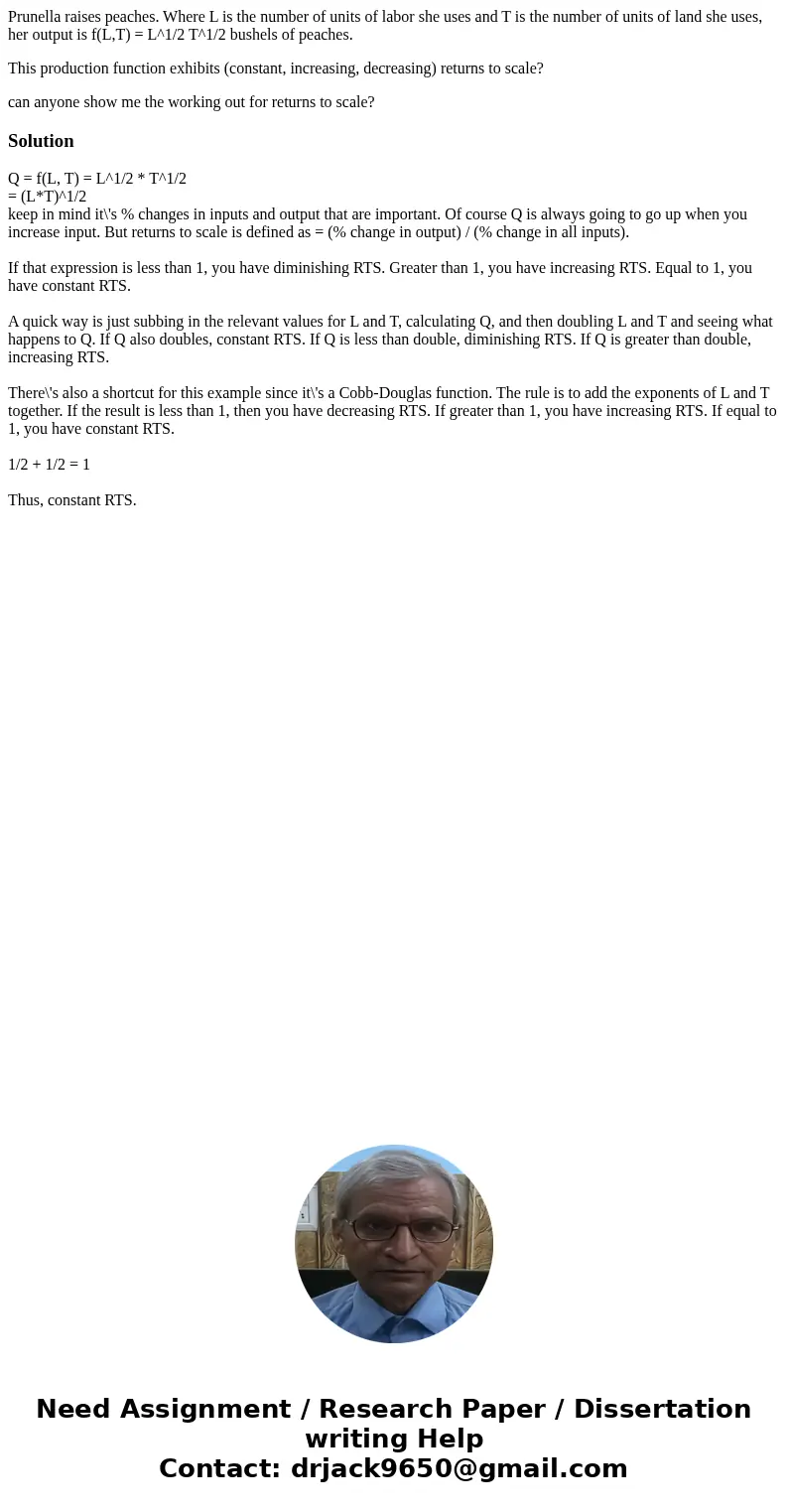Prunella raises peaches Where L is the number of units of la
Prunella raises peaches. Where L is the number of units of labor she uses and T is the number of units of land she uses, her output is f(L,T) = L^1/2 T^1/2 bushels of peaches.
This production function exhibits (constant, increasing, decreasing) returns to scale?
can anyone show me the working out for returns to scale?
Solution
Q = f(L, T) = L^1/2 * T^1/2
= (L*T)^1/2
keep in mind it\'s % changes in inputs and output that are important. Of course Q is always going to go up when you increase input. But returns to scale is defined as = (% change in output) / (% change in all inputs).
If that expression is less than 1, you have diminishing RTS. Greater than 1, you have increasing RTS. Equal to 1, you have constant RTS.
A quick way is just subbing in the relevant values for L and T, calculating Q, and then doubling L and T and seeing what happens to Q. If Q also doubles, constant RTS. If Q is less than double, diminishing RTS. If Q is greater than double, increasing RTS.
There\'s also a shortcut for this example since it\'s a Cobb-Douglas function. The rule is to add the exponents of L and T together. If the result is less than 1, then you have decreasing RTS. If greater than 1, you have increasing RTS. If equal to 1, you have constant RTS.
1/2 + 1/2 = 1
Thus, constant RTS.

 Homework Sourse
Homework Sourse